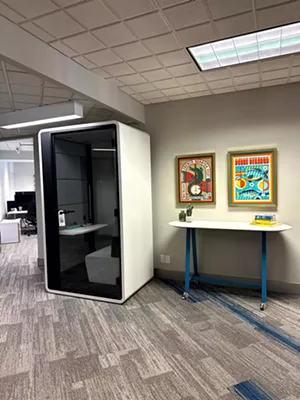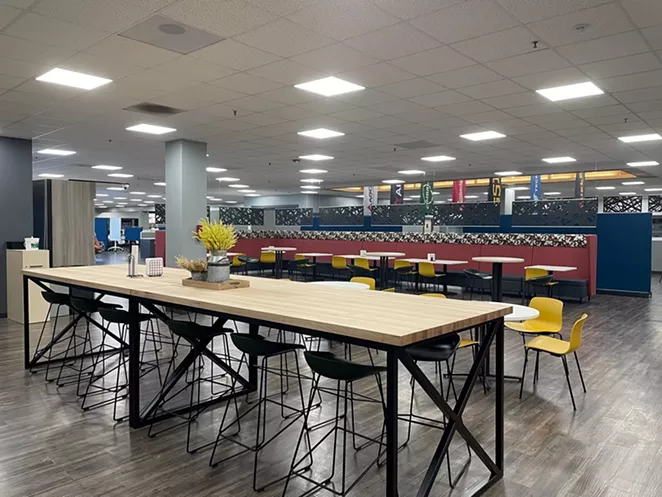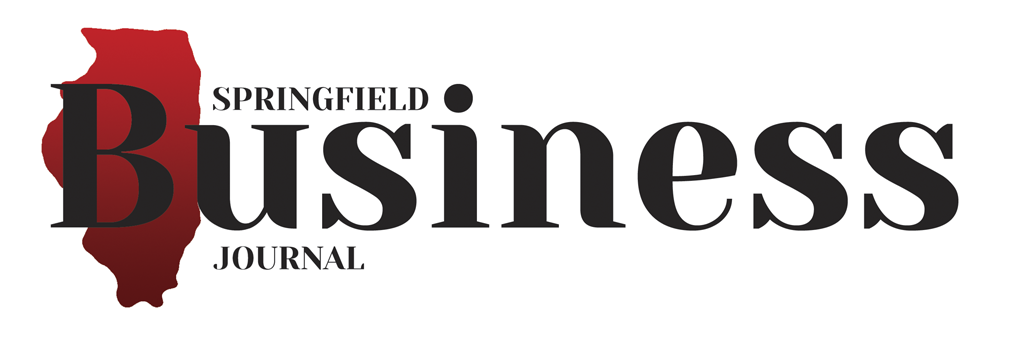
Working from home during the pandemic has shaped the look and feel of the American workforce. Some employers are demanding employees return to work, while others are trying to make the workplace so appealing that staff will want to return to the office.
Chris Davis, vice president of operations at Resource One, 321 E. Adams St., said that although employers want employees in the office more days than not, the "trend is still dominantly hybrid; the employer ideal is four days in the office."
Cindy Davis, president of Resource One, added that some large employers are making the five-day-work week mandatory.
With a predominantly hybrid workplace, space has been modified accordingly and employers are making the workplace more appealing so people will enjoy the space while they're there. Diane Beauchamp, president of Wiley Interiors, 301 E. Laurel St., mentioned a survey conducted in 2024 of people coming back to the office that indicated 85% would like to have time in the office and also want to have a say in their schedule.
"You're seeing employers give extra wellness time and recharge days – added paid time off," Chris Davis said. "Outside of that, so much is space-based affordances. The space design is to accommodate focus and collaboration. Meeting rooms are smaller, and a focus room is where one person can go to take a call or attend an online meeting without disrupting others who sit in open spaces. In the past it was more about having a place where someone could go to get away from noise. Now it's about providing a place for someone to take their noise. There's an emergence and explosion of privacy booths."

Chris Davis emphasized, "There is not one customer that comes through our studio that doesn't say, I need one of those.'"
He continued, "The No. 1 complaint in the corporate work environment is acoustic privacy and acoustic distraction. People got used to working at home where they were in control of the noise. Energy is good, but sometimes people need to be able to focus. We have (a privacy booth) here, and it is used every day. It has front lighting for video meetings and charging and built-in ventilation. They're awesome. If everyone could afford to buy one, everybody would do it."
Meeting rooms are no longer used as they once were. Large team meetings are now happening in open spaces like in a café, Beauchamp said. People don't want to cram into a large conference room where all of the seats are full.
Beauchamp explained that reserving the conference room for meetings isn't necessarily the way it happens today. Office meetings take place in what are referred to as living rooms or the library, and these spaces come with expectations – no long phone calls or wearing headphones.
Beauchamp said that designing work space in this new paradigm means "giving staff more than one space in which to work. People may not have an assigned desk, depending on how many days per week they are in the office." The new workplace contains spaces that have comfortable chairs, desks, tables of varying height and couches. Our lives are more integrated, and so is the workplace.
The break room is another reimagined space in today's workplace, according to Chris Davis. Nobody uses tiny break rooms anymore. People find places to eat, and it's not in the break room, he said, noting that people prefer break rooms to be more like cafes. "People like to eat in open spaces with windows," Cindy Davis said.

Space and the way it is used is important. "Space speaks," Chris Davis said, noting that it talks about culture and communicates brand. It doesn't just attract but also retains good team members in a highly competitive market.
"It's rare that we don't have a very happy customer at the end of the day when they let us do what we do," Chris Davis said. "Your final product is something everybody is proud of, and it does have a return (on investment)."
Chris Davis said, "People spend a lot of time at work; it's a home away from home. We love what we do, and we're lucky to be partnered with manufacturers that do a lot of research on what is good for people. And what's good for people is what's good for business."
A lasting benefit of the pandemic is the realization that people need space that fits the many facets of life and careers. Chris Davis said employers need to provide space and flexibility for people to feel well physically, mentally and emotionally.
"Having to work from home due to the pandemic was an extreme, and it forced us to think about what's important," he said. "It's OK to be flexible with people.
